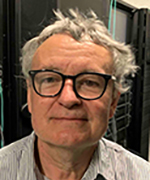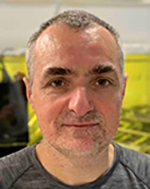 |
||
Home > TERATEC FORUM > Workshops > Workshop 7
Workshop 07 - 2:00 to 6:00 pm
Power Consumption and Carbon Foot Print
Chaired by Pierre Louat, expert Mechanical HPC , Ansys France et Laurent Grandguillot, Sales HPC France, HPE
Immersive cooling vs Air cooling
The CBP/PSMN of the ENS de Lyon is the platform in charge of pooling, administering and maintaining in operational conditions the HPC servers of the laboratories of which the ENS de Lyon is one of the supervisor. The PSMN was created in 1993 and currently operates more than 1,000 servers for approximately 45,000 computing cores. Electricity consumption and the management of the heat produced have always been a source of reflection.
Immersion cooling is nothing new, from IT in general to HPC in particular. 35 years ago, Cray-2s and successors had their tower assembly immersed in a coolant. Their operators still remember the dilemma between intervening on a defective component (making the assembly unavailable for long days) or letting a sub-assembly operate in degraded mode. Nowadays, faced with the inflation of the TDP (Thermal Design Power) of processors, air as a coolant has reached its limits.
Immersion in a coolant fluid thus emerges as a global, systematic solution, completely satisfying the need to dissipate more than 1 kW per cabinet unit, at least theoretically. Indeed, in this area as elsewhere, "the devil is in the details": only a scientific approach (where the reference is queen), built "tested by facts" and in an operational context makes it possible to present the optimal conditions of use of this technology presented as innovative.
At the ENS de Lyon, as part of a partnership with TotaLinuX, we have chosen to study all the aspects of operating "traditional" immersed servers. This ranges from the preparation of equipment for immersion to its operation within the framework of maintenance (integrator vision). This also involves measuring the temperatures of a maximum of components to the overall electrical consumption of the whole (ecological vision). The preliminary studies carried out have already made it possible to specify a few principles necessary for a "smooth" transition to this technology, which is both promising (in its advantages) but more restrictive (in its uses).
Finally, we looked at several parameters by comparing the behavior of identical servers, immersed in oil or air-cooled. The tests focused on various applications representative of the use of HPC servers at the ENS de Lyon. A summary will give a first overview of the gains that can be expected in terms of power consumption and increase in processor frequency as well as in terms of temperature stability of electronic components.
 |
Biography : With a PhD in applied mathematics, Hervé Gilquin has always been involved in HPC, first as a user then as technical manager and director of the PSMN, the computing center of the ENS de Lyon. Founded in 1993, this platform is in charge of pooling, administering and maintaining in operational conditions the HPC servers of the laboratories of which the ENS de Lyon is one of the supervisor. The PSMN currently operates more than 1,000 servers for approximately 45,000 computing cores. The optimal hosting of HPC servers, the electricity consumption and the management of the heat produced have always been a source of reflection for Hervé Gilquin. |
|---|---|
 |
Biography : Chercheur de formation, enseignant de première expérience, Emmanuel Quémener a choisi dès fin 1999 de se placer au service de ces coeurs de métiers dans la fonction d'ingénieur. Très investi dès 1996 dans l'usage des logiciels libres dans l'enseignement supérieur, il en a généralisé l'usage dès 2001 dans toute l'infrastructure informatique de l'ENS-Cachan, des réseaux aux services critiques notamment. Revenant au calcul scientifique mi 2005 (dans le méso-centre de l'ENS-Cachan), il travaille successivement à l'observatoire de Lyon (projet spatial JWST) puis au laboratoire d'informatique de l'ENS-Lyon (projet ANR LEGO). Rejoignant la tête du service informatique de l'ENS-Lyon fin 2007, il choisit de revenir au service de la recherche fin 2009 à l'aube de la fusion des ENS lyonnaises. Actuellement ingénieur au Centre Blaise Pascal (maison de la simulation de la place lyonnaise), ses principaux projets sont axés sur l'inégration logicielle, le stockage distribué, le calcul scientifique sur GPU, le développement de SIDUS (Single Instance Distributing Universal System). Son activité opérationnelle se complète par la création et l'administration du centre d'essais composé de plateaux techniques et dédiés aux chercheurs et aux enseignants de la place lyonnaise (développement d'environnements logiciels spécifiques, forge logicielle, ingénierie de projets, études de faisabilité, développements de démonstrateurs et prototypes, ...). Cette dernière activité s'apparente beaucoup à une fonction de "pilote d'essai informatique", laquelle, menée en étroite collaboration avec le centre de calcul de l'ENS-Lyon, le Pôle Scientifique de Modélisation Numérique, permet une internalisation complète de ses installations. |
Register now and get your badge here
- TERATEC Forum is strictly reserved for professionals.
- Participation to exhibition, conferences and workshops is free (subject to seats available)
- On line registration is obligatory.